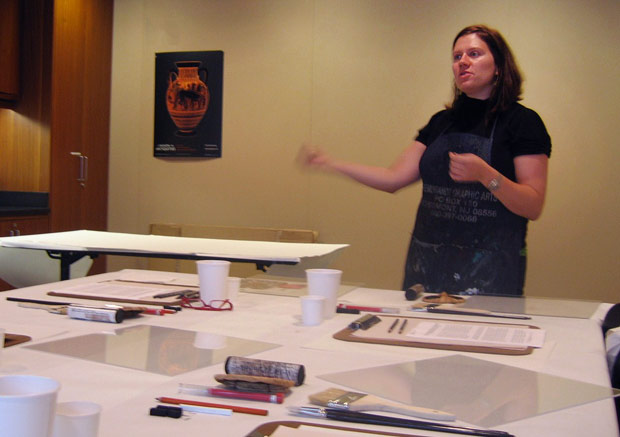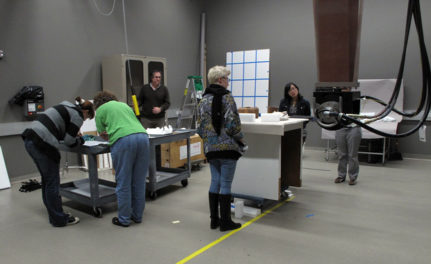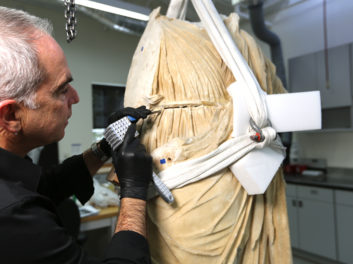Jaime Ursic believes everyone should study drawing. Not just because she’s an artist, but because it gives you two near-magical gifts: looking closely, and slowing down time.
She’ll show you how to do both at Drawing from Antiquity, a free monthly studio program at the Getty Villa. The Yale-trained painter and printmaker, who also specializes in historical artistic techniques (she recently led a course on encaustic painting, for example), talked to me about her approach.

Artist and drawing enthusiast Jaime Ursic gives a lesson in the Education Studio at the Getty Villa.
What happens at Drawing from Antiquity?
We partake in a long history—going back to Michelangelo—of drawing from three-dimensional works of art to understand line, space, and shadow.
You say drawing helps you slow down. How?
You slow down when you engage with a work of art, when you explore your visual intelligence. We’re so used to visual engagement through computer screens and pixels. When you sit down and draw from an object, you slow down your looking. You feel a connection from the visual information to your hand.
Okay, I’m in! It’s 10am on Saturday. Now what?
The first Saturday of each month, I present a guided lesson on a specific subject: line weight, shading, tone, value. I also model slowing down and practicing. But first, we warm up!
How do you “warm up” for sketching?
Blind contour drawing is a great warm-up. As your eye follows the outline of the work, your hand follows your eye, not the paper. And here’s a fun pair exercise: One partner describes the piece to the other, who draws what they hear. It gets you looking more closely than you would’ve before.
You have a different focus each month. Describe what’s on tap.
Each month we sketch on a specific theme—in February we’ll look for animals in movement, and in March we’ll study figures. In beautiful April, we’ll go into the garden and draw the flowers, plants, and herbs. In May, we’ll practice drawing forms in relation to a composition, and in June, we’ll place those forms in space.
What happens on the other Saturdays of the month?
Participants come to the Villa, with free parking, and just draw. They have an open-ended concept to explore on their own, or with partners from the course. On the last Saturday of each month, we come together again and discuss our work and our experience.
What do you like best about sketching from ancient Greek and Roman art?
For centuries, antiquity was the very definition of beauty. You’re participating in that tradition.
There’s also a great appeal, and challenge, in sketching from ancient works that may have a piece missing. First, there’s appeal in the non finito, because unfinished works invite you to use your imagination to complete the scene. Second, artworks with missing pieces challenge your ability to sketch the missing structure, like a nose or an ear.
What’s your best sketching tip?
Give yourself time. Turn off the phone. Be patient. And always warm up!




Comments on this post are now closed.